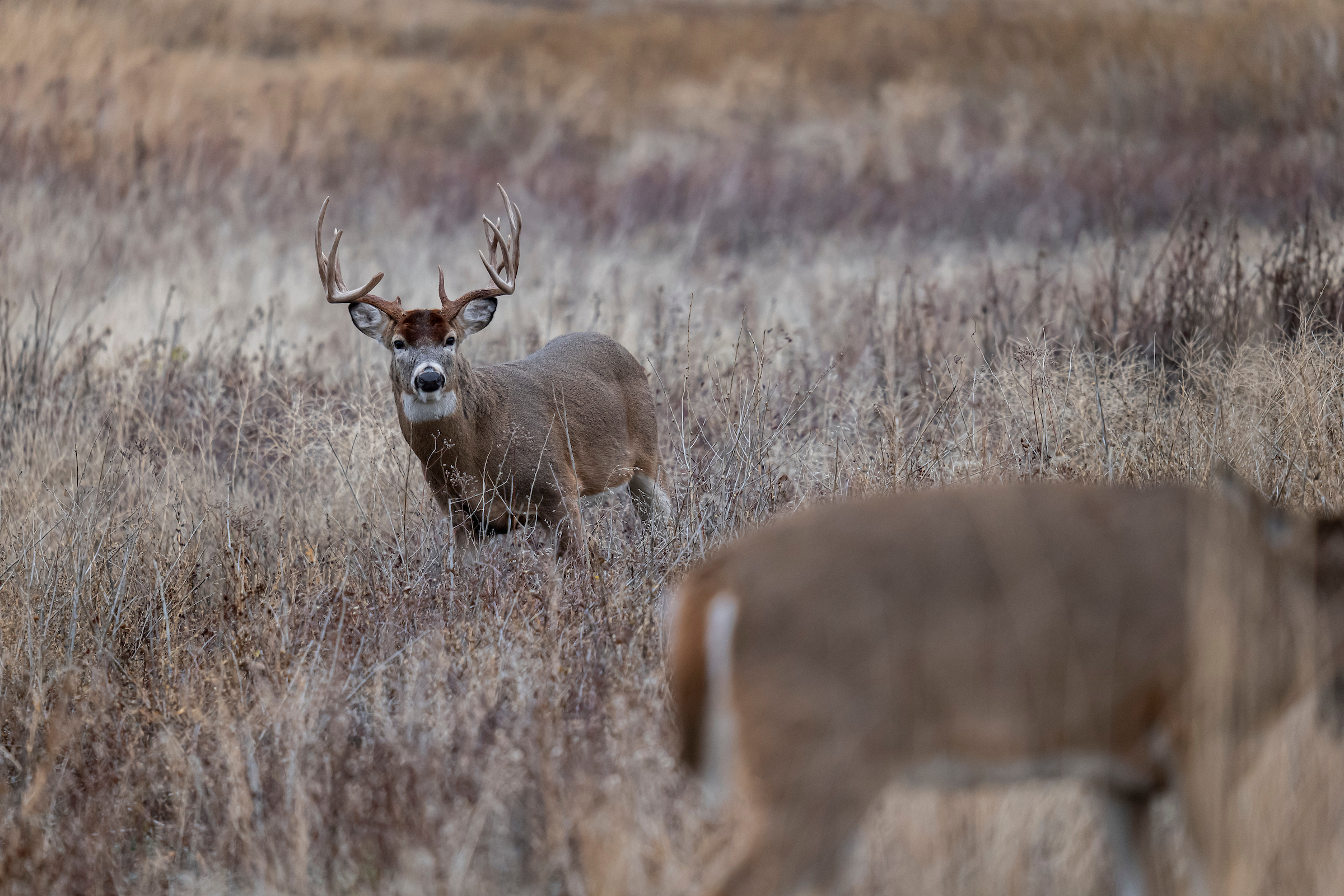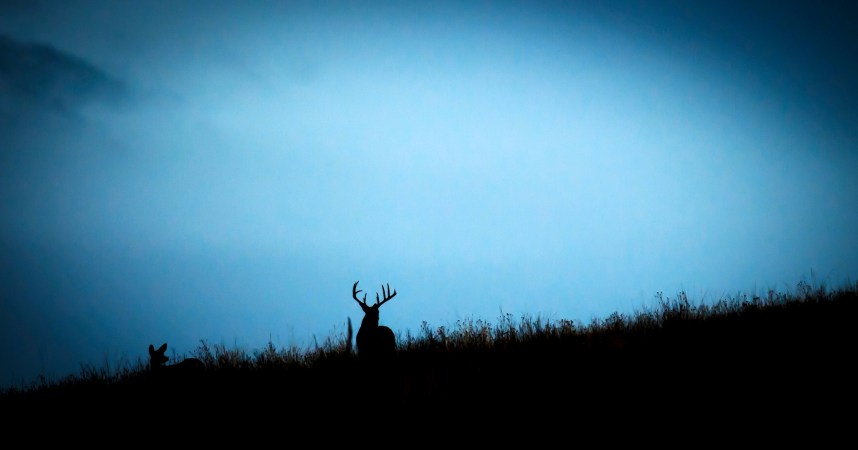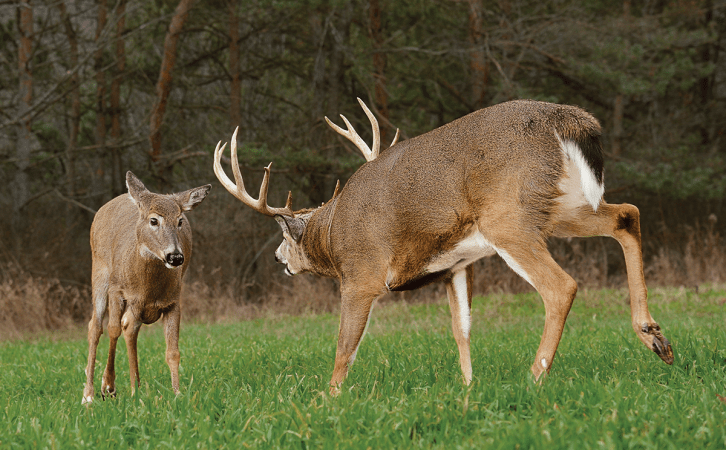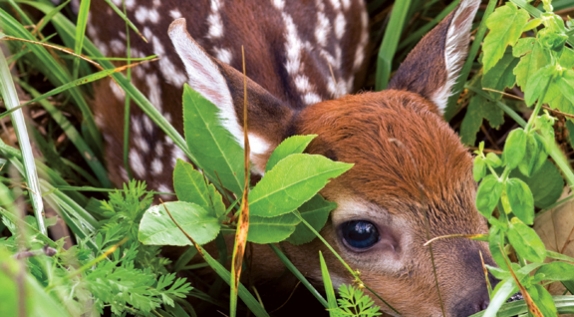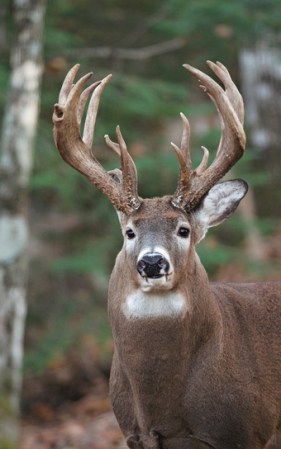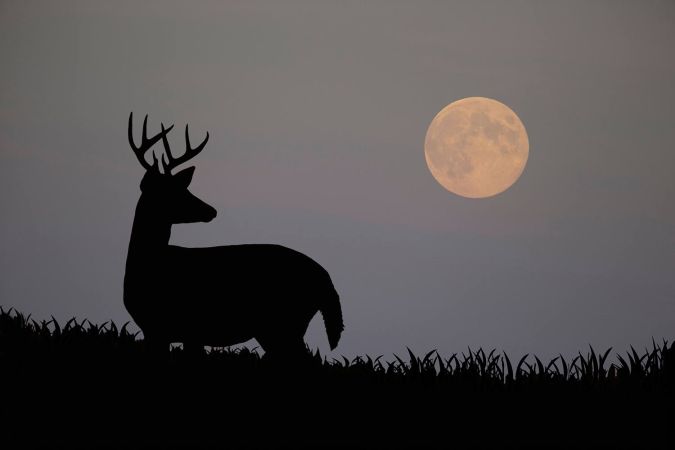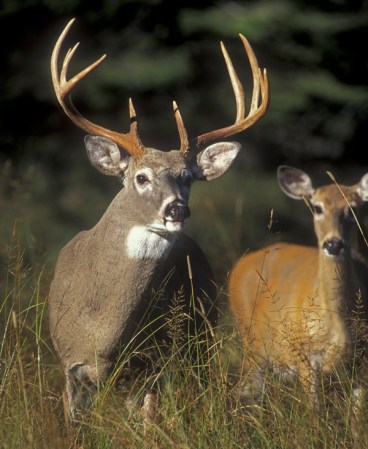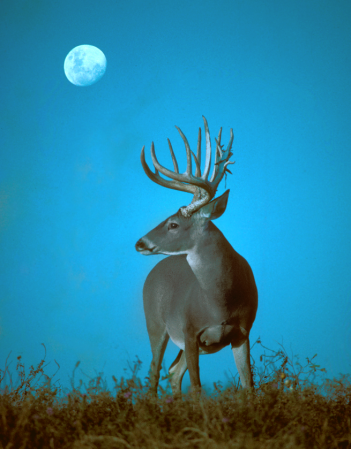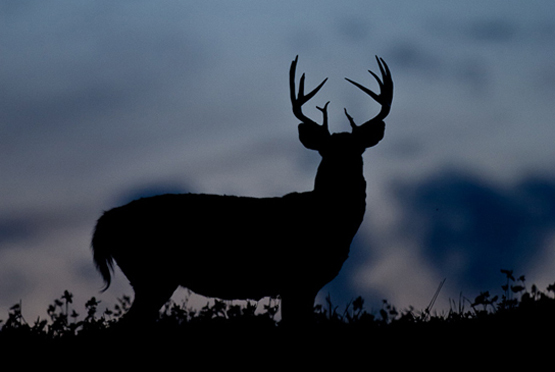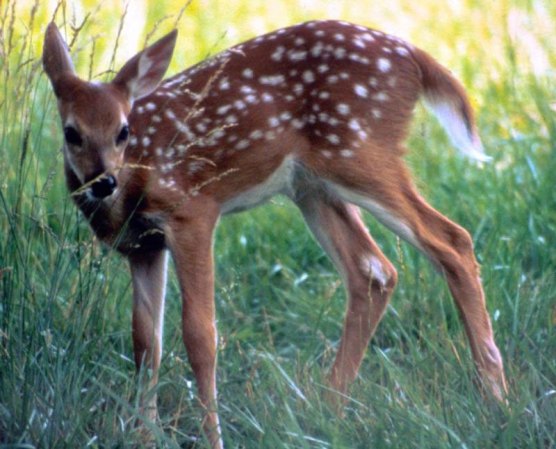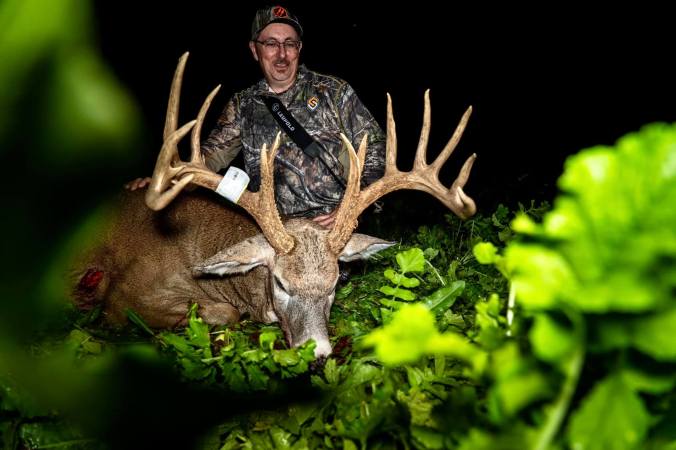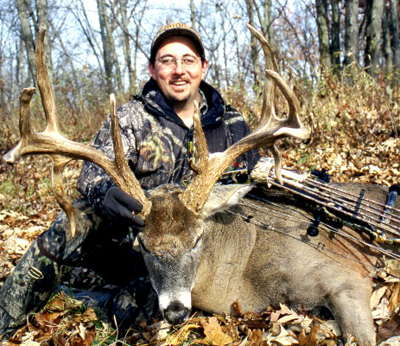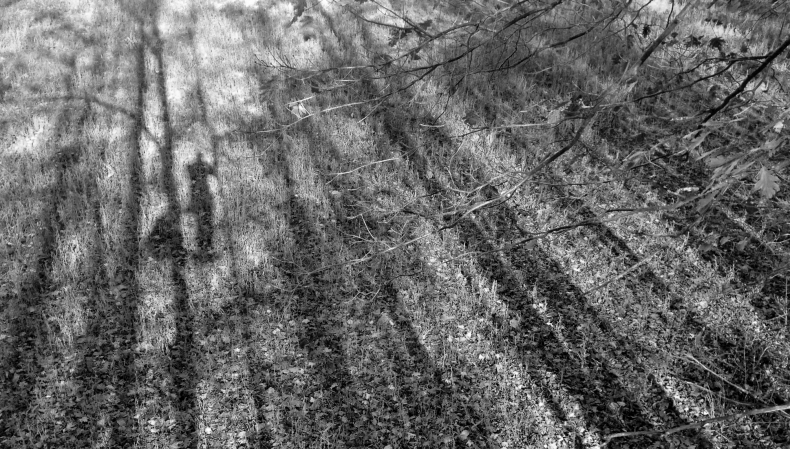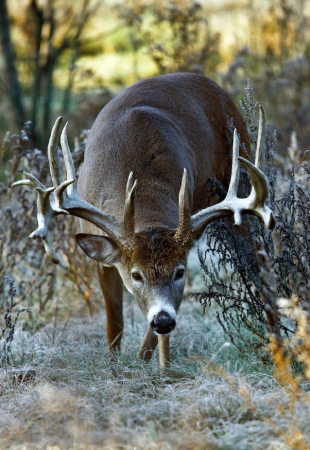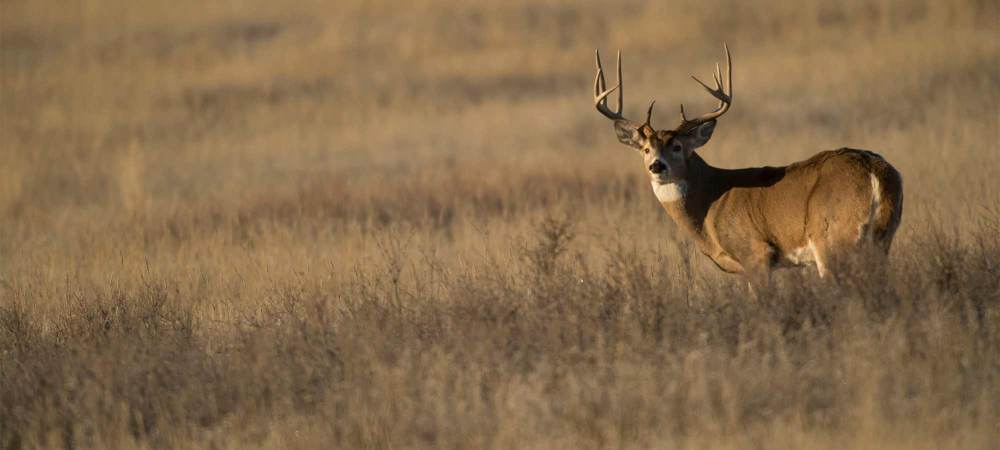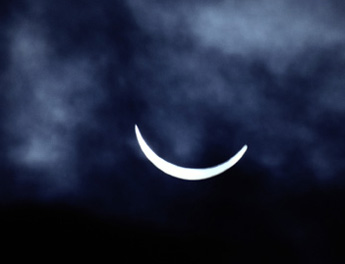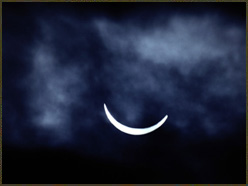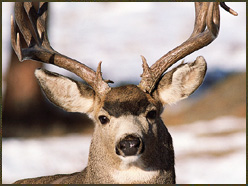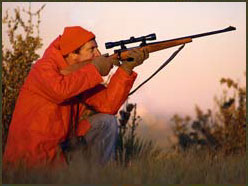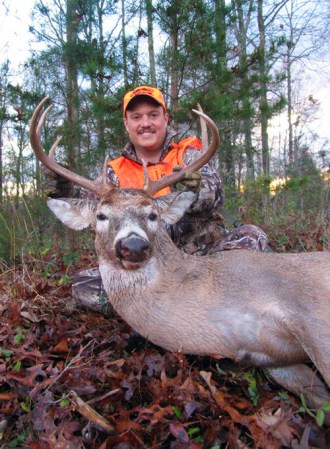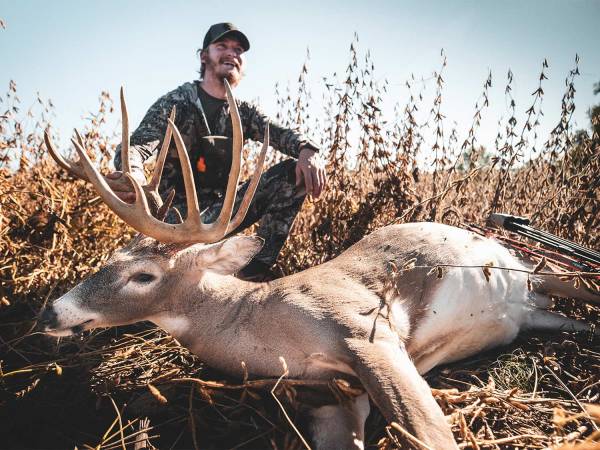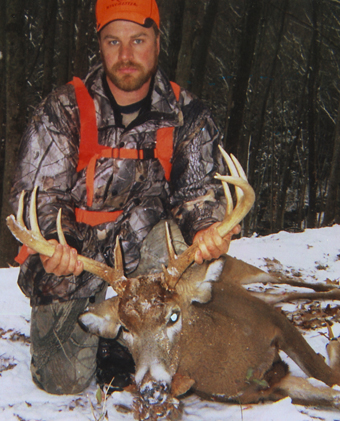The rut is often talked about as some magical timeframe, where giant bucks are running every ridge top without a care in the world—besides breeding the next doe. The window opens briefly and then shuts abruptly. If you’re hunting on the right day, you’ll certainly kill the buck of your dreams. But if you’re hunting on the wrong day, you’ll never punch your tag.
This is not how hunting the whitetail rut actually works in the real world. Rut activity ebbs and flows. Variables specific to your hunting location (like weather and hunting pressure) play a huge role in deer activity, far beyond the big-picture timing.
But still, for those of us with a tight schedule and limited vacation time, being able to plan your rut hunts is crucial. Fortunately, most research indicates that this is possible. When it comes to the timing of the whitetail rut, many in the scientific community believe that photoperiod (the amount of light over a 24-hour interval) is at the core of everything.
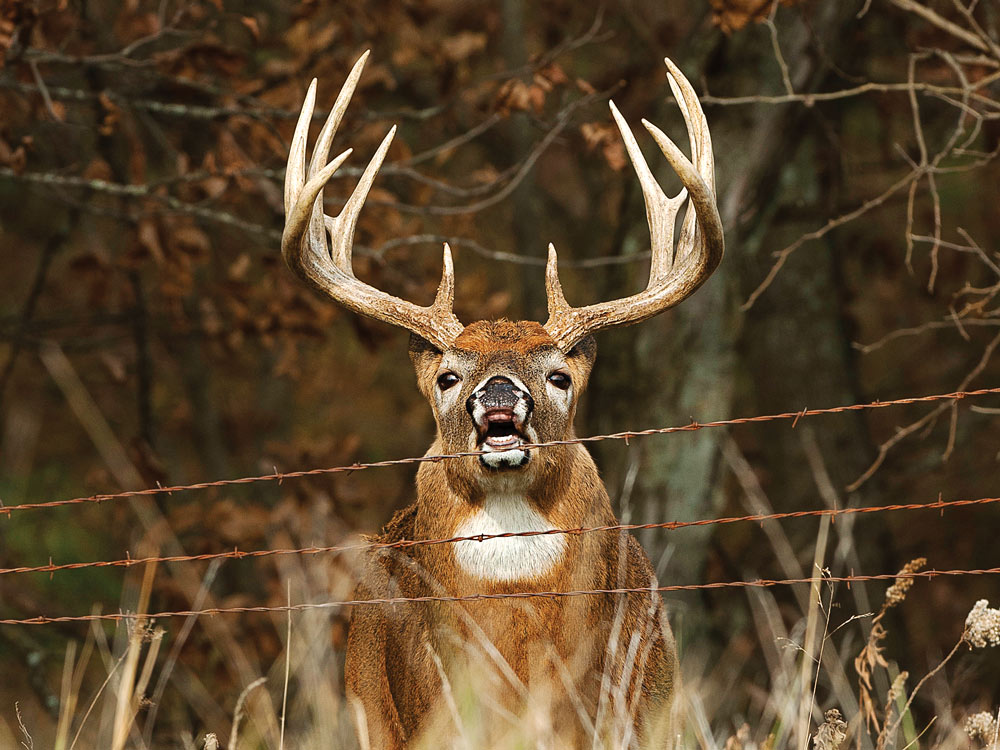
How Rut Timing Works
“It’s a domino effect,” says wildlife biologist Matt Ross of the National Deer Association. “As the photoperiod changes, testosterone increases in a buck. There’s a direct line between the deer’s eyeballs and the pineal gland in the brain, and that releases a type of hormone, which tells the testes to produce more testosterone. And it’s the same thing with does—the photoperiod drives the timing of her estrus cycle.”
These changing levels of hormones in bucks and does determine when deer can breed. Because these hormonal shifts are tied to photoperiod, which changes at a consistent rate and at the same time every year, the peak of actual breeding activity, for most the country, is quite uniform.
Rod Cumberland, a deer biologist from New Brunswick, reached a similar conclusion through the study of road-killed deer.
“From January until June, when females were carrying fetuses, we would open up the reproductive tract and measure those fetuses,” he says. “That would give us a pretty good estimation of when they would have given birth and when they were bred.” He then looked at this data and compared it to a number of potential rut-triggering factors—such as the moon phase, barometric pressure, and cloud cover—but only one thing matched. “No question,” he says. “It was photoperiod.”
What this means for hunters is that timing the best rut action oftentimes requires nothing more than a calendar. In most areas of North America, other than the Deep South, a consistent peak of breeding occurs around mid to late November. A Pennsylvania study conducted from 2000 to 2007 confirmed this. Biologists examined more than 6,000 road-killed does and fawns and found an average peak breeding date between November 12 and 18. A similar 2016 Illinois study found peak breeding from November 8 to 11, and Cumberland’s New Brunswick study found a slightly later peak, between November 26 and 29. On the other hand, in Mississippi, studies established an average conception date of January 1, with significant regional differences within the state—which seems to be the norm for many of the Southern states. To nail down this timing for your own area, contact a local wildlife biologist, who likely keeps track of regional fawn drop and conception dates.
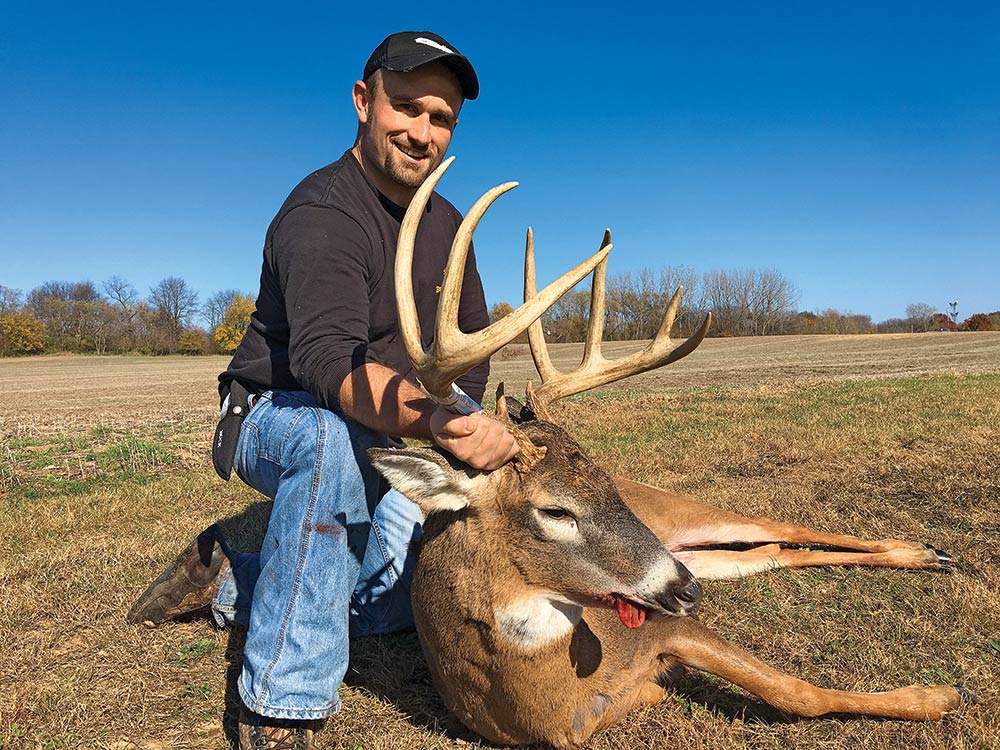
Observation: Temperature and moon phase have little effect on peak breeding time. Corey Fall
Midwest deer hunter Corey Fall has taken advantage of this photoperiod consistency by prioritizing the calendar over all else when planning his rut hunts.
“What I’ve found is that the actual peak breeding time around here is between November 13 and 17—somewhere in that ballpark, every year,” says Fall. “About seven days before is when you’re going to see that peak seeking and chasing happening, when those bucks are looking for receptive does.”
Fall plans his schedule to be in the woods during this time frame regardless of temperature, moon phase, or other factors. “For me, I know that every year there will be great rut action sometime between November 4 and 10.”
A perfect example of Fall’s successful planning came in 2015, when he cleared his job commitments and traveled to Iowa for a weeklong rut hunt. Despite daytime temperatures that climbed into the mid-70s, he made it a priority to be in a tree on November 4—and that’s when he killed a 147-inch buck. Fall has replicated that success several times in the last 10 years. He’s taken six mature bucks between 130 and 170 inches during that time frame across Ohio, Michigan, and Iowa. On these hunts, he focuses on typical rut locations such as pinch points between large blocks of timber, terrain funnels, and stands downwind of doe bedding areas. But most important, during those magic few days of the year, he simply puts in his time even if it means all-day sits.
“You’ve got to grind it out,” he says. “Even though it’s tough mentally when you go hours on stand without seeing a deer, it can happen at any minute. Regardless of other factors, those bucks have a strong desire to breed, and those does need to be bred during that week to 10 days, so it’s going to happen. You’ve just got to make yourself be there when it does, and hope it takes place in daylight.”
READ NEXT: 101 Best Deer Hunting Tips For the Rut
Does Moon Phase Play a Role in Rut Activity?
Most biologists and research studies say that moon phase does not play a real role in whitetail rut activity. However many experienced deer hunters do believe that the moon impacts deer behavior. Two of those expert whitetail hunters are Mike Hanback and Mark Drury. Every year, Hanback predicts the best times to hunt the rut based on moon phase. Here’s what he wrote about activity this year (2022) in an earlier Outdoor Life story:
“Drury and I keep honing our theory: Mature bucks move best in daylight hours in and around a full moon in November. We know this flies in the face of what Granddaddy told you: Bucks move all night on the big moon, it’s the worst time to hunt!
But I know we’re onto something. The more I hunt a full moon in early to mid-November across the U.S. and Canada, the more mature bucks I see wandering around glassy-eyed from 9:00 a.m. until 3:00 p.m. Drury agrees, and you’ve seen all the rutting giants he kills on his television shows, some of them on a big moon.
I hate speak ill of what Granddaddy taught you, but data from the NC State moon study backs us up. ‘A common misconception is that deer see better at night because it’s brighter when the moon is full,” said the scientists. “But according to our data they actually move less on average at night during a full moon and more during the middle of the day, and also earlier in the evenings.’” —Alex Robinson
READ NEXT: Why I Hunt the Whitetail Rut by Moon Phase—and You Should Too
How Weather Impacts Rut Activity
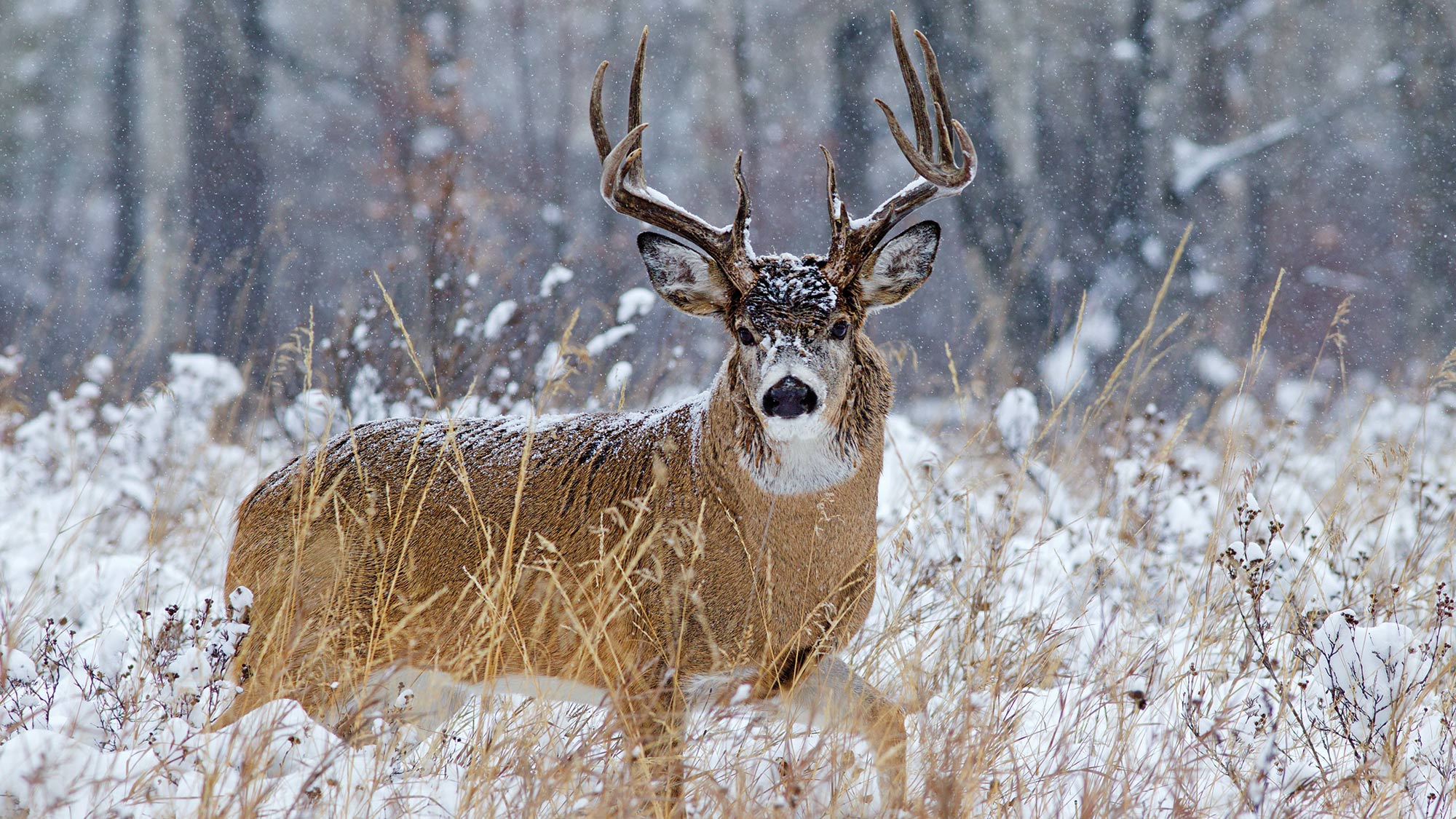
Finally, weather plays an important role in how whitetail rut activity.
“I’m constantly watching cold fronts in October and November,” says Joe Elsinger a successful public-land bowhunter from Iowa. “In my opinion, it’s the biggest factor for deer movement outside of hunting pressure.”
For Elsinger, like many of the best hunters across the country, much of his success has been driven by timing his hunts around cold fronts.
“I’m fanatical about being in the right spot at the right time,” says Elsinger. “And cold fronts are one of the best ways to figure that out. The best fronts feature a large temperature drop of 15 degrees or more in daytime highs, followed by a very high pressure system that boosts the barometric pressure up to 30.20 or higher. Another time for peak movement seems to be at the tail end of the cold front, when there is still high pressure but winds switch again to a southerly direction.”
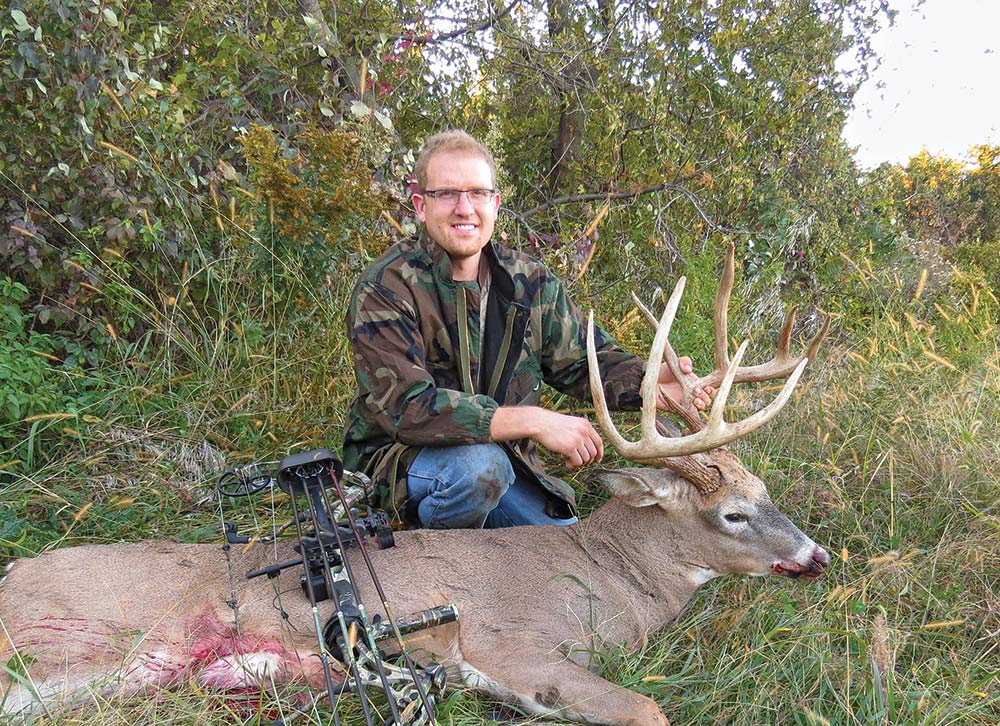
Observation: Cold fronts with temperature drops of 15 degrees or ore will get bucks moving. Joe Elsinger
Elsinger used this cold- front focus to kill a mature buck on a late October morning in 2014.
“My setup was on a scrape at the edge of known buck bedding,” he says. “I shot him as he was working the scrape at about sunrise on that foggy morning. I was waiting to hunt that location until I had those conditions to maximize my odds of catching a mature buck on his feet with a spike of pre-rut activity.”
Renowned hunters such as Mark Drury, Bill Winke, and Jeff Sturgis all commonly discuss similar strategies for timing the best hunts leading up to and around that typical rut time frame. And while cold fronts haven’t been found to influence actual breeding dates, many believe they trigger the best movement and daylight rutting activity seen each year. Tony Smith, who hunts small parcels of land in Michigan, has followed the cold-front recommendations of Drury and Sturgis with an impressive level of success.
Because he primarily hunts on an 11-acre piece of land, it’s crucial for Smith to minimize his imprint on the property until optimum conditions for deer movement are present.
“When hunting that pre-rut and early rut, there’s absolutely no question that keying in on those cold fronts is essential,” he says.
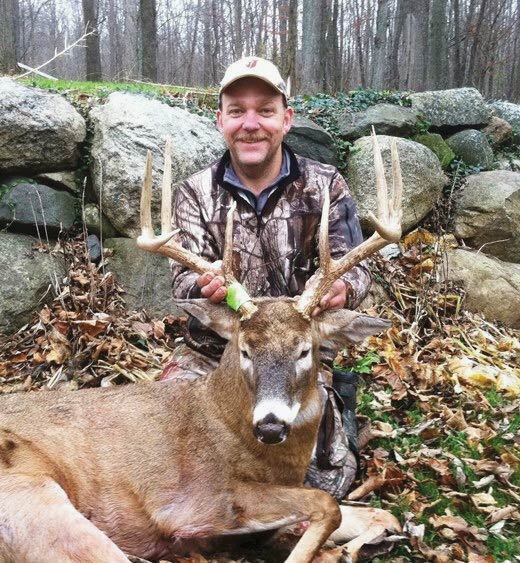
Observation: Calm conditions immediately after a storm is a prime time to hunt rutting bucks. Tony Smith
“When I see the planets align, the barometer high, the double-digit temperature drop, and conditions calming after a big storm or disturbance passing through, I’ll do whatever I have to do to clear my calendar and hunt, and I go to my best stands.”
In 2014, just such a front was passing through in early November, and Smith and his brother-in-law headed into the property for their first hunt of the year there. Just before dark, a 4 ½-year-old buck walked under his brother-in-law’s stand and offered a 15-yard shot. This was the third time in four years that one of them had killed a 120- to 145-inch buck following a cold front.
One of the best resources around for tracking upcoming cold fronts for yourself is wunder ground.com, which shows detailed graphs mapping out 10 days of upcoming changes in temperature, wind, barometric pressure, and precipitation. For rut hunters looking to pick the right days to take off work and sit all day, this level of detailed weather data is a tremendous tool.
